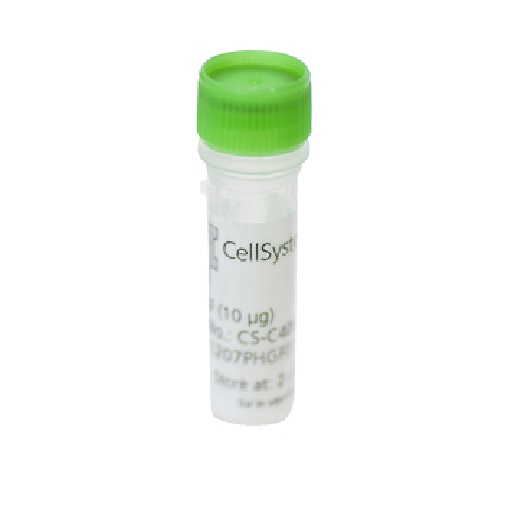Overview
- Species: Viral
- Keywords: Growth Factors
- Product Type: VEGF
- Donor / Source:Escherichia Coli.
- Formulation:The protein was lyophilized from a concentrated (1mg/ml) solution containing PBS.
- Purity:Greater than 90.0% as determined by SDS-PAGE.
- Amino acid sequence:MGSSHHHHHH SSGLVPRGSH DSTKTWSEVF ENSGCKPRPM VFRVHDEHPE LTSQRFNPPC VTLMRCGGCC NDESLECVPT EEANVTMQLM GASVSGGNGM QHLSFVEHKK CDCKPPLTTT PPTTTRPPRR RR
- Solubility:The lyophilized oVEGF-E Orf Virus should be reconstituted in water or medium to a concentration not lower than 50µg/ml. For long term storage we would recommend to add at least 0.1% human or bovine serum albumin.
- Stability:Lyophilized Vascular Endothelial Growth Factor-E Orf Virus although stable at room temperature for 3 weeks, should be stored desiccated below -18°C. Upon reconstitution VEGF E -OV should be stored at 4°C between 2-7 days and for future use below -18°C. Please prevent freeze-thaw cycles.

